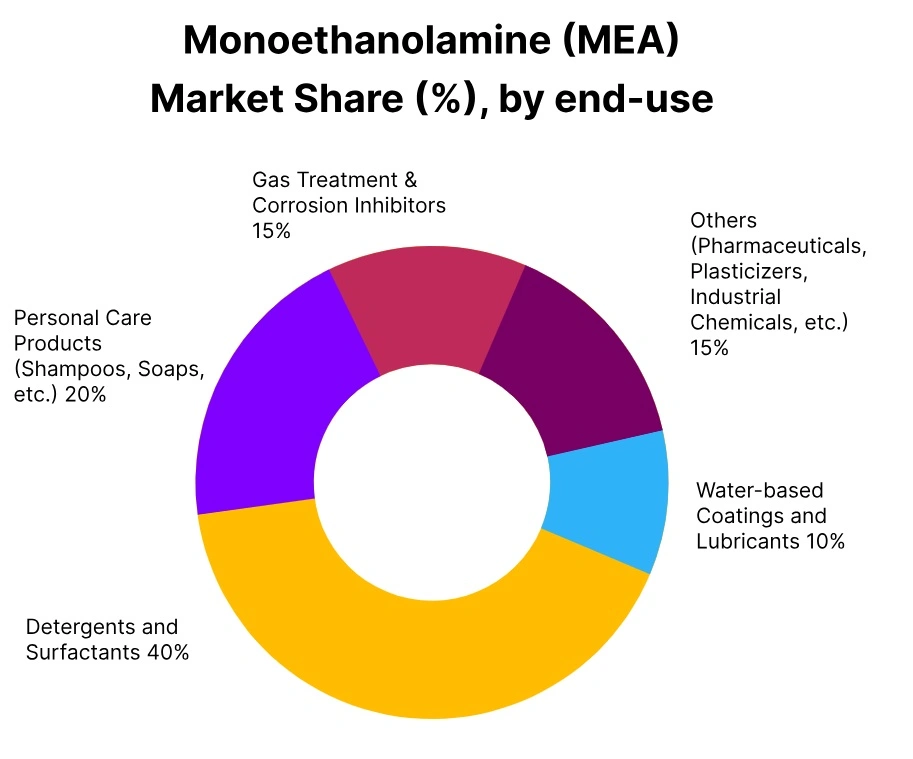Price-Watch’s most active coverage of Monoethanolamine (MEA) price assessment:
- IG(99.5% min) FOB Shanghai, China
- IG(99.5% min) FOB Jeddah, Saudi Arabia
- IG(99.5% min) FOB Kelang, Malaysia
- IG(99.5% min) FOB Laem Chabang, Thailand
- IG(99.5% min) FOB Hamburg, Germany
- IG(99.5% min) CIF Nhava Sheva (China), India
- IG(99.5% min) CIF Nhava Sheva (Saudi Arabia), India
- IG(99.5% min) CIF Jebel Ali (Saudi Arabia), United Arab Emirates
Monoethanolamine (MEA) Price Trend Q3 2025
In Q3 2025, the global Monoethanolamine (MEA) market saw mixed price trends across different regions. Some countries, such as Germany and India, experienced price increases, while regions like Saudi Arabia, Thailand, and the UAE saw significant dips. These price changes were primarily influenced by the demand in key sectors like chemicals, agriculture, and pharmaceuticals.
In September 2025, Monoethanolamine prices in many countries continued to reflect the broader economic trends, with price declines observed in regions facing slowdowns in industrial activity. The Monoethanolamine (MEA) price trend in Q3 2025 reflected regional disparities in market demand and global supply chain dynamics.
China
Monoethanolamine (MEA) Export prices FOB Shanghai, China, Grade- Industrial Grade (99.5% min).
Monoethanolamine prices in China decreased by 2.1% in Q3 2025, mainly due to a slowdown in demand from key sectors like chemicals and agriculture. This decline in consumption outweighed stable production levels and caused prices to drop. The weak industrial output in these sectors contributed to the price reduction. By September 2025, Monoethanolamine prices in China remained subdued, reflecting continued slow demand.
Monoethanolamine (MEA) price trend in China reflected the global industrial slowdown, as weaker consumption across important industries resulted in a quarter-long price decline, highlighting the region’s struggle with reduced industrial activity and lower consumption.
Malaysia
Monoethanolamine (MEA) Export prices FOB Kelang, Malaysia, Grade- Industrial Grade (99.5% min).
Monoethanolamine prices in Malaysia saw a decline of 0.1% in Q3 2025, mainly due to weak demand from the chemical and agricultural sectors. Despite this small decrease, the overall industrial activity in Malaysia stayed stable, limiting the price drop. In September 2025, monoethanolamine prices in Malaysia continued to reflect the subdued demand, although the decline remained minimal.
The Monoethanolamine (MEA) price trend in Malaysia exhibited minor fluctuations, with steady but slightly reduced consumption levels across key industries. Despite the global slowdown, Malaysia’s industrial landscape remained mostly stable, keeping the price decline contained within a narrow range.
Thailand
Monoethanolamine (MEA) Export prices FOB Laem Chabang, Thailand, Grade- Industrial Grade (99.5% min).
Monoethanolamine prices in Thailand dropped by 4.2% in Q3 2025, driven by weakened demand from the chemical, agriculture, and pharmaceutical industries. These sectors saw slowdowns in production, leading to lower consumption and a sharp price decline. By September 2025, Monoethanolamine prices in Thailand continued to mirror the ongoing industrial downturn, with limited signs of recovery.
The Monoethanolamine (MEA) price trend in Thailand mirrored the regional decline, as weaker industrial activity across these key sectors resulted in further price decreases. The country’s industrial slowdown contributed to the overall fall in prices, signaling a challenging market environment.
Saudi Arabia
Monoethanolamine (MEA) Export prices FOB Jeddah, Saudi Arabia, Grade- Industrial Grade (99.5% min).
Monoethanolamine prices in Saudi Arabia dropped by 6.3% in Q3 2025, significantly more than in other regions. This decline was attributed to a slowdown in demand from industries like chemicals and agriculture, which faced production slowdowns. The price reduction was especially pronounced, in line with the broader economic challenges in the region.
By September 2025, Monoethanolamine (MEA) prices in Saudi Arabia remained under pressure from weak demand, continuing the downward trend. The Monoethanolamine (MEA) price trend in Saudi Arabia was greatly influenced by reduced industrial consumption, showing the difficulty of maintaining price stability in a challenging economic and industrial environment.
Germany
Monoethanolamine (MEA) Export prices FOB Hamburg, Germany, Grade- Industrial Grade (99.5% min).
Monoethanolamine prices in Germany increased by 4.9% in Q3 2025, driven by stable demand from the chemical and pharmaceutical industries. These sectors maintained stable production, helping to support the price hike despite global economic challenges. Germany’s industrial output remained strong, further contributing to the price rise.
By September 2025, Monoethanolamine prices in Germany continued to show an upward trend, driven by sustained demand and limited supply disruptions. The Monoethanolamine (MEA) price trend in Germany showed resilience, with higher demand from key industries boosting prices and positioning Germany as a standout market in a generally subdued global environment.
UAE
Monoethanolamine (MEA) Import prices CIF Jebel Ali, United Arab Emirates, Grade- Industrial Grade (99.5% min).
Monoethanolamine prices in the UAE, importing from Saudi Arabia, fell by 6.4% in Q3 2025, mirroring the broader decline in Saudi Arabia. The price reduction was swayed by a slowdown in demand from sectors like chemicals and agriculture, which impacted local consumption. By September 2025, Monoethanolamine (MEA) prices in UAE continued to follow the downward trend, reflecting weak industrial activity and reduced chemical demand.
The Monoethanolamine (MEA) price trend in the UAE showed little sign of recovery, with the region’s price reduction largely mirroring the downturn in Saudi Arabia. The local market remained under pressure as consumption levels continued to weaken.
India
Monoethanolamine (MEA) Import prices CIF Nhava Sheva, India, Grade- Industrial Grade (99.5% min).
According to Price-Watch, Monoethanolamine prices in India, importing from China, rose by 2.2% in Q3 2025. This price increase was primarily driven by steady demand from sectors such as chemicals, pharmaceuticals, and agriculture. In spite of the global industrial slowdown, India’s consumption of Monoethanolamine remained strong, which helped support the price growth.
By September 2025, MEA prices in India continued to go up , reflecting the ongoing demand across key industries. The Monoethanolamine (MEA) price trend in India showed resilience, with stable consumption patterns bolstering prices despite challenges in other regions, positioning India as a strong market amid global price declines.




